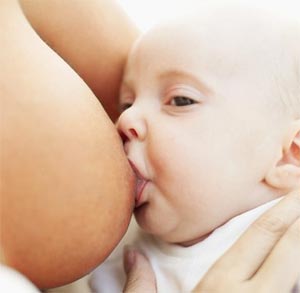Belly Wrap after Pregnancy

Every woman is worried about the big
butt, belly or loose skin around the navel that develops after pregnancy. In
few cases, even after the baby is out, loose skins hang over the navel of the
delivered mother making her feel huge and bulky as before. Worry not as all of them are reversible
through proper exercise and nursing.
Imagine it has taken nine months
for your skin around the navel to stretch and find way for your baby. It will
take more or less the same time to shrink as well. The uterus needs minimum
four to five weeks to contract to its normal size. The cells that swelled
during pregnancy start releasing the fluids in the form of urine, sweat and
vaginal secretions.
Finally the extra weight gained during pregnancy is burned
while feeding babies or through exercises. However, the post pregnancy tummy
remains for some women especially for those who ignore exercises that
concentrate on the stomach.
More than couple of methods are
adopted to flatten the belly after pregnancy. Exercise; especially stomach
crunches and stomach-strengthening movements are found to be the best belly
flattening methods. Many women who undergo c-section (cesarean) prefer belly
wrap since they cannot exercise for the initial three months.
Belly Wrap
Belly wraps have always come in handy
for those women, who feel that they are totally out of shape after cesarean
birth. Belly wrap can be worn immediately after giving birth for a period of
4-8 weeks. It is always better to check with your gynecologist before wearing a
belly wrap.
Belly wrap is nothing new. It has served
different medicinal purposes through centuries. Such wraps have proven
effective for people with back pain since they increase abdominal support.
Termed as Haramaki, belly wrap or
belly binding is quite common in Japan. Japanese medicine claims
that flabby tummy can be reversed through proper posture, support and warmth on
the abdominal.
Latin American women have used
Faja (belly wrap) for centuries together to reduce puffy tummies. They follow
the same principle of providing heat and energy to reduce the loose skins
around the navel. India and Europe have also followed the same methodologies to
reduce tummies developed especially after pregnancy.
Overall, it is believed that belly
wraps work by the compression technique. The puffy skin needs certain amount of
heat and pressure to reattach to the muscle. A belly wrap provides the same. In
other words, the belly wrap provides gentle compression on the abs that helps
the uterus to return to its normal size quicker. It helps new moms get rid of
puffy stomach.
Remember, belly wrap helps only
the loose skin to reattach to the stomach muscles. It does not help you get
back to your original pre-pregnancy position. You need to supplement the belly
wrap with few exercises to achieve the same. Belly wrap combined with exercise
helps you achieve a gorgeous figure within a short period of time.
Types of belly wraps
Belly wraps vary from the simple ones to the more sophisticated or expensive ones. However, each has their own claims as of achievement. Find the belly wrap that best fits you. Remember, on your first wear, the belly wrap should hold your abdomen tight but comfortably. When you get slimmer, the belly wrap should still be able to hold you tightly to compress the extra tummy left out.
Velcro-Belt belly wrap: Made of cotton, this belly wrap is best suited for women who have undergone c-section since it is soft enough to wear over the wound. The main advantage of this wrap is that the Velcro can be fastened anywhere around the wrap. However, being cotton Velcro-Belt belly wrap might look bulged below the clothes and the chances of the same being noticed are high.
Complete Pull-up wrap (with underwear): As the name suggests, this belly wrap comes with underwear and is best suited to wear underneath clothes. Few disadvantages of this wrap include size and adjustability. The wrap is not adjustable and the size matters a lot since the butt should fit in as it comes with the underwear. The ideal thing is to buy this wrap as and when needed, because if you get little slimmer the wrap will not be so helpful.
Half pull-up wrap (no underwear): Considered as one of the most comfortable belly wraps, half pull up wraps come with expandable cotton. However, it does not have underwear and hence is not shown under clothes. Sizing is not an issue since the stretchable cotton provides support in all stages.
Button-up Waist Cincher: This is a button-up wrap made of cotton lining and rubber on the outer side. It is generally very tight and is not advisable for women who have undergone c-section. Sizing is also an issue since it is very tight. Before you consider buying this, check with your gynecologist and try the same as well.
Post-Surgical Girdle: One of the most expensive wraps, this is generally prescribed for post-liposuction. However, it works well for postpartum too. The wrap is not seen under clothes and is highly comfortable when going out. Apart from quicker effect, the main advantage of the wrap is that it works around the entire torso section instead of stomach alone.
Full Body Post-Surgical Girdle: This is similar to the post-surgical girdle only difference being the size. As the name suggests, this wraps covers a larger portion of the body. The wrap comes with an opening in the crotch area that enables you to go to bathroom without pulling off the entire belt.
Top of the Page: Belly Wrap after Pregnancy
Tags:#belly wrap #belly wrap after pregnancy
 Planning Pregnancy
Planning Pregnancy Pregnancy Diet and Exercise
Healthy Weight Gain in Pregnancy
Pregnancy Food Cravings
Pregnancy Heartburn
Improving Fertility after 35
Ovulation Test Strips
Pregnancy Symptoms
Early pregnancy cramping
Early pregnancy Test
High Risk Pregnancy
More on Pregnancy
 Natural Childbirth
Natural Childbirth Premature Birth
Pregnancy Massage
Pregnancy Problem
Pregnancy Due Date Calculator
Amniocentesis
Twin Pregnancy
Ectopic Pregnancy
Pregnancy Morning Sickness
Molar Pregnancy
Pregnancy Ultrasound
Constipation during pregnancy
Insomnia during Pregnancy
Smoking during Pregnancy
Teen Pregnancy
Exercise during pregnancy
Late Term Abortion
Sign of Miscarriage
Pregnancy Fatigue
Pregnancy Gas
Pregnancy sciatica
Belly Wrap after Pregnancy
Emotional Health during Pregnancy
Lactating Mother
Infertility
Recurrent Miscarriage
Pregnancy Varicose Veins
Postpartum Depression
Epidural
Premature Infant
Top of the Page: Belly Wrap after Pregnancy
Popularity Index: 101,102

